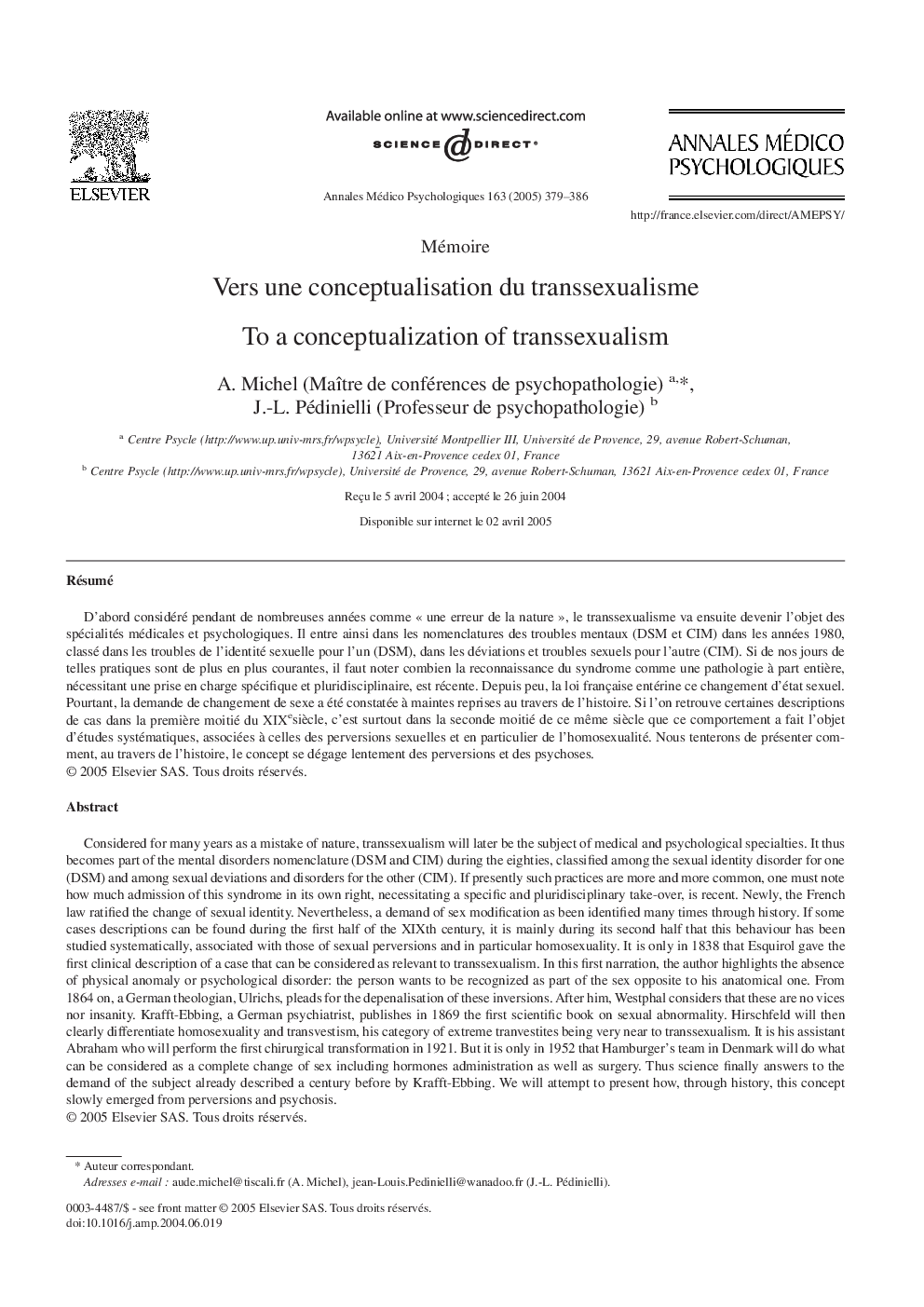| Article ID | Journal | Published Year | Pages | File Type |
|---|---|---|---|---|
| 10296838 | Annales Mdico-psychologiques, revue psychiatrique | 2005 | 8 Pages |
Abstract
Considered for many years as a mistake of nature, transsexualism will later be the subject of medical and psychological specialties. It thus becomes part of the mental disorders nomenclature (DSM and CIM) during the eighties, classified among the sexual identity disorder for one (DSM) and among sexual deviations and disorders for the other (CIM). If presently such practices are more and more common, one must note how much admission of this syndrome in its own right, necessitating a specific and pluridisciplinary take-over, is recent. Newly, the French law ratified the change of sexual identity. Nevertheless, a demand of sex modification as been identified many times through history. If some cases descriptions can be found during the first half of the XIXth century, it is mainly during its second half that this behaviour has been studied systematically, associated with those of sexual perversions and in particular homosexuality. It is only in 1838 that Esquirol gave the first clinical description of a case that can be considered as relevant to transsexualism. In this first narration, the author highlights the absence of physical anomaly or psychological disorder: the person wants to be recognized as part of the sex opposite to his anatomical one. From 1864 on, a German theologian, Ulrichs, pleads for the depenalisation of these inversions. After him, Westphal considers that these are no vices nor insanity. Krafft-Ebbing, a German psychiatrist, publishes in 1869 the first scientific book on sexual abnormality. Hirschfeld will then clearly differentiate homosexuality and transvestism, his category of extreme tranvestites being very near to transsexualism. It is his assistant Abraham who will perform the first chirurgical transformation in 1921. But it is only in 1952 that Hamburger's team in Denmark will do what can be considered as a complete change of sex including hormones administration as well as surgery. Thus science finally answers to the demand of the subject already described a century before by Krafft-Ebbing. We will attempt to present how, through history, this concept slowly emerged from perversions and psychosis.
Keywords
Related Topics
Health Sciences
Medicine and Dentistry
Psychiatry and Mental Health
Authors
A. (Maître de conférences de psychopathologie), J.-L. (Professeur de psychopathologie),
